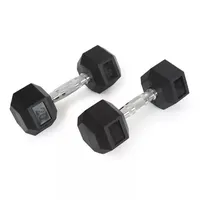A strength coach says you only need these three exercises to build stronger biceps
Build stronger, more muscular arms with this trainer's top three biceps exercises
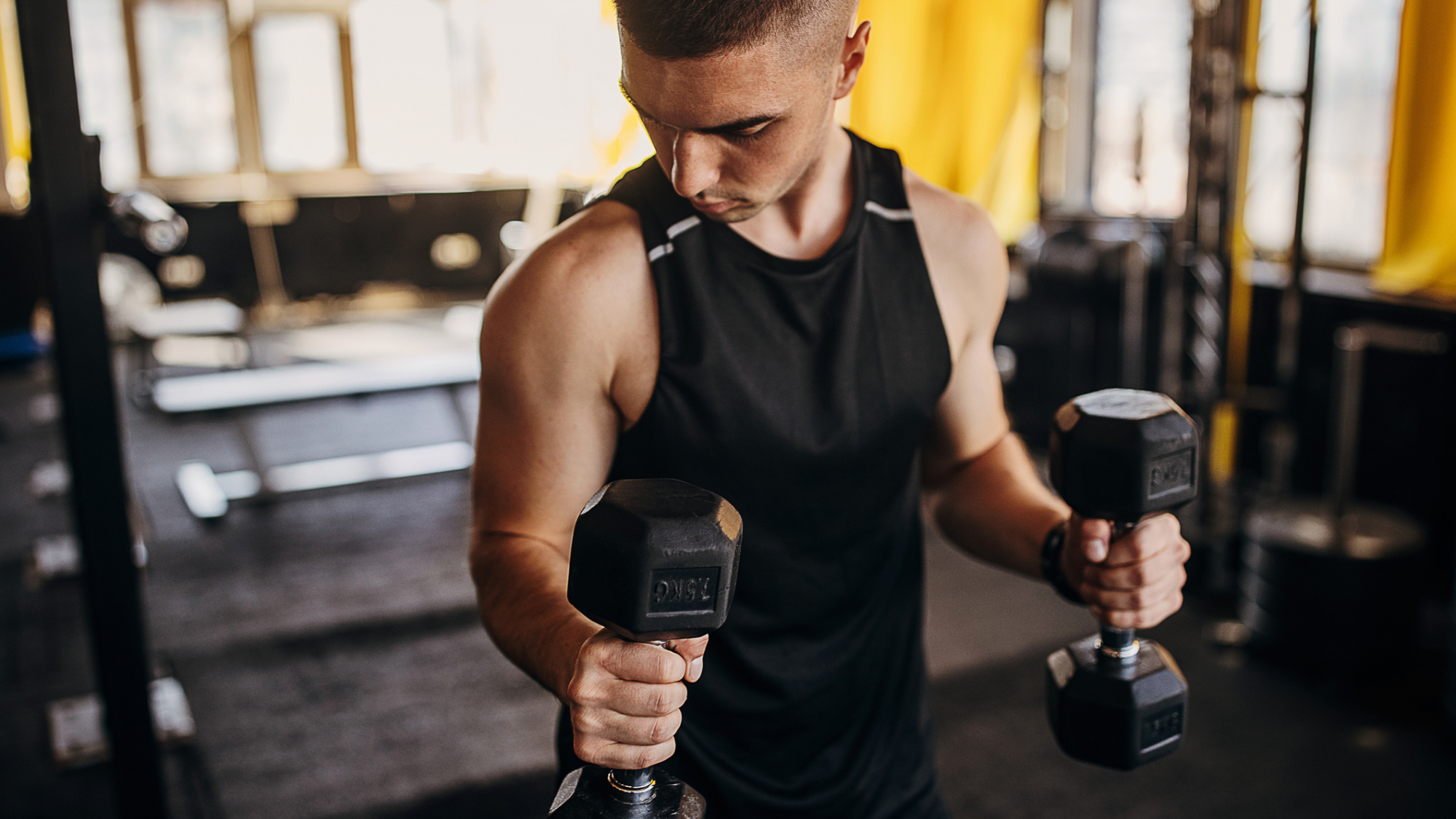

If you ask someone to "make a muscle", they'll invariably raise their arm and bring a clenched fist towards their shoulder to flex their biceps. So it's no surprise that lots of people want to grow and strengthen these signature arm muscles.
There are plenty of lengthy upper-body routines you can do, but if you only have a limited time to work out each week you'll need an efficient set of exercises that can help you gain muscle. We asked a certified personal trainer for their top three moves to target this area—here's what he recommends.

Domenic Angelino is a certified personal trainer and strength and conditioning coach. He holds a master’s degree in kinesiology, as well as further fitness qualifications from the American Council of Exercise and National Strength and Conditioning Association. He has been involved with several research projects, written a textbook on fitness and nutrition for a school system and worked with fitness apps, fitness influencers, athletes and educational institutions as an expert consultant.
Biceps workout
- Chin-up: 3x8-12
- Standing dumbbell hammer curl: 3x6-8
- Barbell curl: 3x8-12
Angelino has not only shared his top three biceps exercises—the chin-up, standing dumbbell hammer curl and barbell curl—but also suggested how you can use them to hit your fitness goals.
"In general, if you want to train to increase muscle size, use sets of six to 12 reps," he tells Fit&Well. "If you want to increase strength, use sets of three to five reps."
Angelino says that both rep ranges "will still result in some progress towards both goals," but by opting for one over the other you will shift the emphasis of your training towards building either muscle or strength.
TRX Training Hex rubber bumbbells 20lb pair: was $83.99, now $53.96 at Target
Save $30.03 This 20lb set of dumbbells has been discounted in the early Black Friday sales. They feature a classic hex design, which is great for providing a stable base during exercises like renegade rows, and have knurled handles for extra grip during sweaty workouts.
1. Chin-up or underhand inverted row
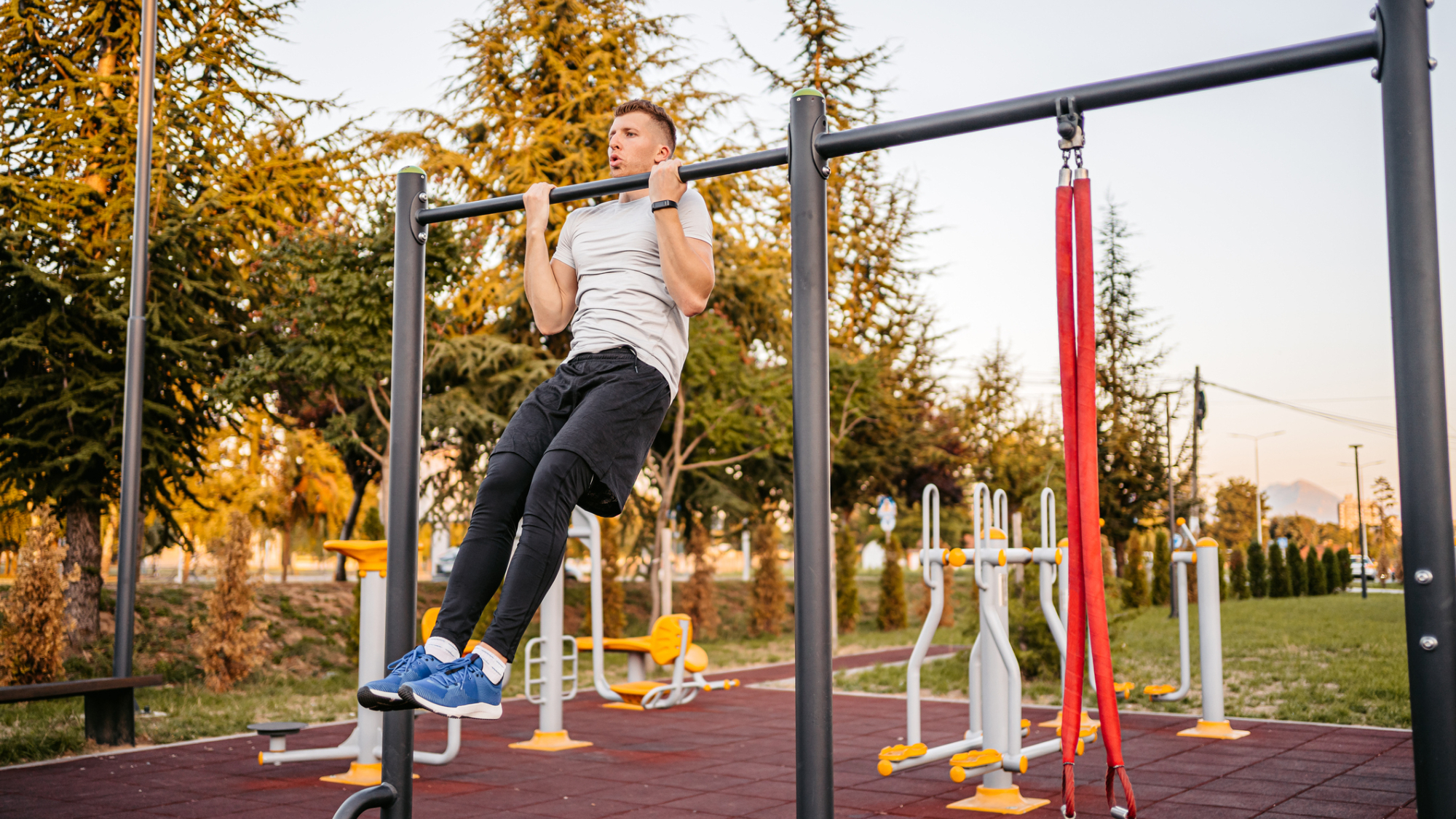
- Stand underneath a pull-up bar and grasp it with an underhand grip, knuckles facing forwards. Your hands should be roughly shoulder-width apart. Hang from the bar and retract your shoulder blades by bringing them back and down.
- Pull yourself upwards until your chin is above the bar, then control yourself back to the starting position.
If this move is too difficult, you can use a lower bar (or a barbell in a rack) and perform an underhand inverted row. To do this:
- Find a bar that is at roughly hip-height, and grasp it with an underhand grip with your hands roughly shoulder-width apart.
- Keeping your feet on the floor, your core braced and your body forming a straight line from your head to your heels, hang from the bar.
- Pull yourself towards the bar until your chest is almost touching it, then lower yourself back to the starting position.
Why should you do chin-ups?
Start your week with achievable workout ideas, health tips and wellbeing advice in your inbox.
The chin-up and underhand inverted row are more than just biceps-focused moves. It's a compound exercise, meaning it involves multiple joints and muscles at once.
So as well as training your arms, you'll also recruit muscles in your shoulders and back like your latissimus dorsi—the broad, flat muscles that cover most of your mid-back.
2. Standing dumbbell hammer curl
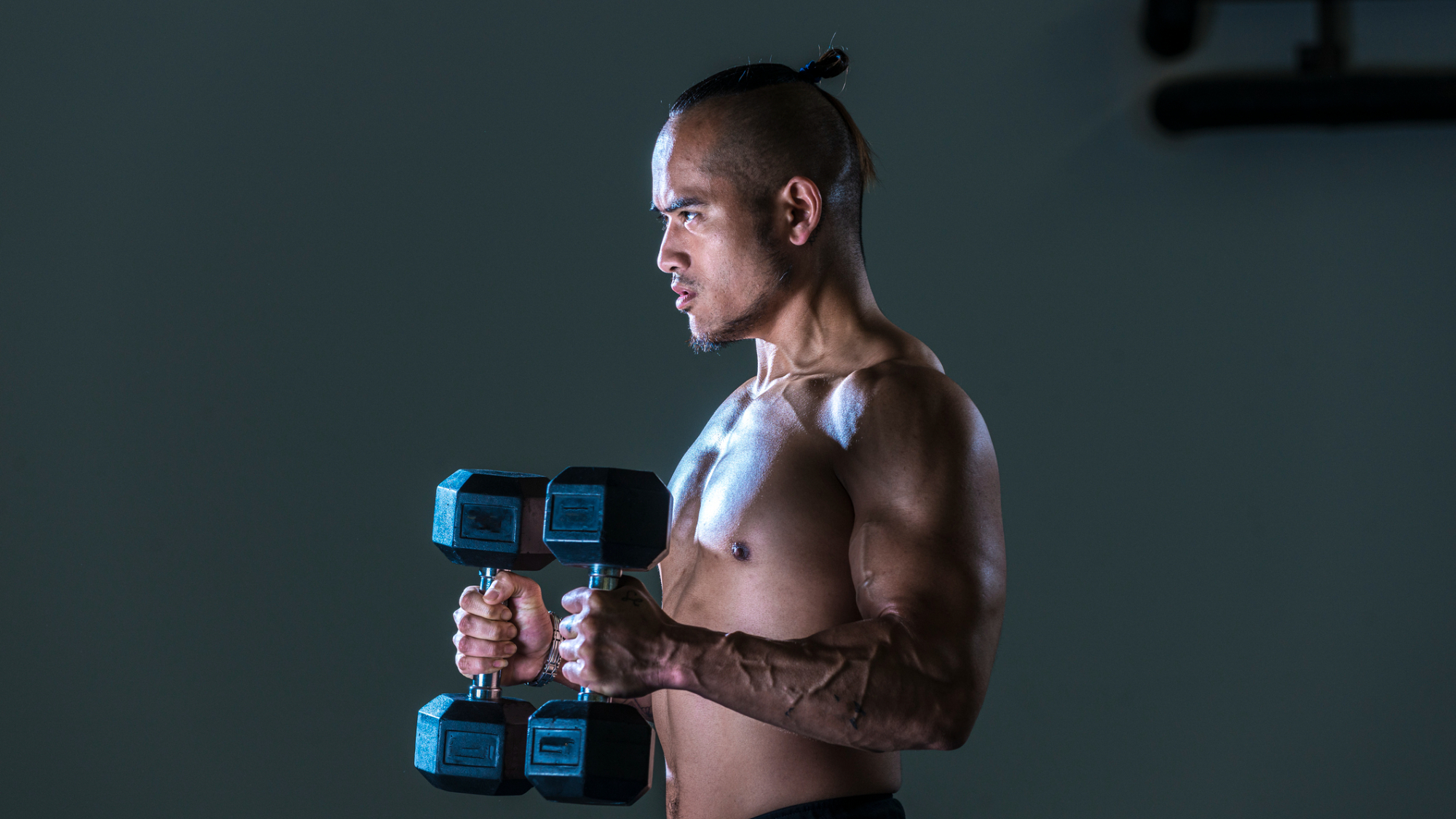
- Stand upright with your arms by your side and a dumbbell in each hand. The handles of the two dumbbells should remain parallel throughout this exercise (this is called a neutral grip).
- Keeping your elbows tucked into your sides, raise the front heads of both dumbbells towards your shoulders.
- Squeeze your biceps at the top of the movement, then control the dumbbell back to the starting position.
Why should you do standing dumbbell hammer curls?
The biceps curl is probably the best-known biceps exercise there is, but there are plenty of different ways you can do it.
For his second exercise, Angelo selects the standing dumbbell hammer curl variation, which challenges you to hold the dumbbells with a neutral grip to alter the impact of the exercise.
"[The neutral grip] causes you to emphasize your brachialis and brachioradialis muscles in addition to your biceps," he says.
"Your brachialis is a deep muscle that isn’t visible from the outside of your body, but it still helps your biceps look bigger and helps them out if they ever need support when lifting something very heavy.
"Because your brachialis is nestled underneath your biceps, it also pushes your biceps out as it grows, making your biceps appear larger."
3. Barbell curl
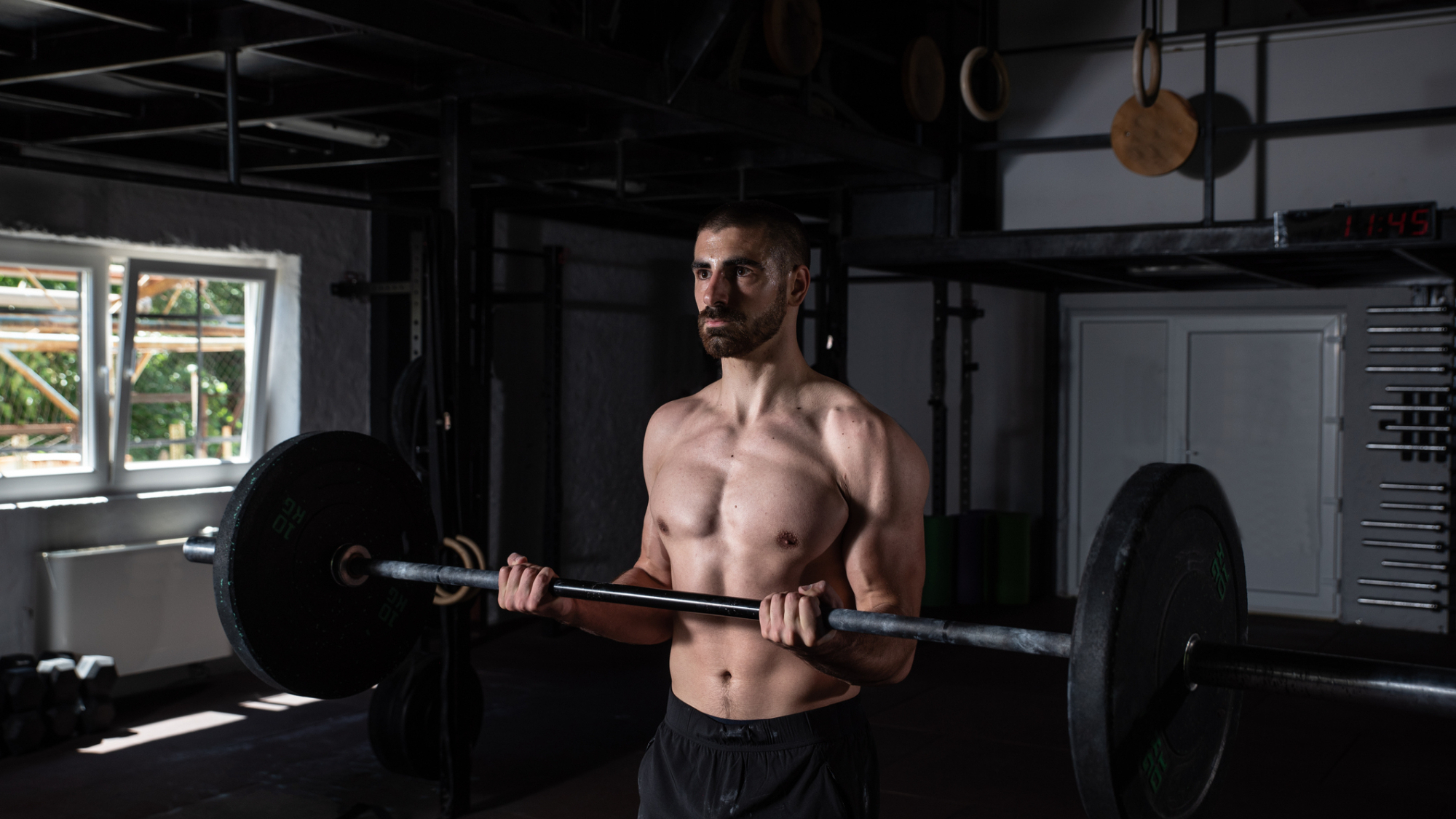
- Hold a barbell in both hands, with your hands about shoulder-width apart. Use a supinated (underhand) grip, with your knuckles facing the floor.
- Keeping your chest up, core braced and elbows tucked to your side, curl the bar so your hands move towards your shoulders.
- Squeeze your biceps at the top of the movement, then control the bar back to the starting position.
Why should you do barbell biceps curls?
The barbell curl is an old-school strength and muscle-building staple.
"The barbell curl is the most common biceps exercise for a reason; put simply, it works," he says. "This is because the biceps respond best when you perform exercises using a supinated [underhand] grip."
He explains that this is why chin-ups (performed with a supinated grip) activate your biceps more than pull-ups (performed with a pronated grip, placing more emphasis on your back muscles).
Angelo says he likes to use the biceps curl because it really targets the biceps rather than recruiting other supporting muscles to help out.
"This disproportionate emphasis on just your biceps is why the barbell curl has historically been most people’s go-to biceps exercise."
Benefits of stronger arms
Training your biceps can increase the size of these muscles, leading to more muscular-looking arms.
It will also strengthen them, improving your performance in other compound exercises like pull-ups and bent-over rows, as well as in sports and everyday activities (like opening a heavy door).
Having stronger biceps could also help protect your from injury.
"If [you lift a weight that's] too much for your biceps to handle, your biceps tendon will tear which can be extremely painful and will require surgery to fix," says Angelo, citing poor deadlift form as a possible cause of this.
"You can pre-emptively reduce the risk of this happening by making sure your biceps are strong in general. The stronger your biceps are, the harder it will be for them to be over-strained."
Which bicep exercises are best
These are some of the best biceps exercises out there, and a workout featuring these three moves is sure to help you develop the strength and size of your arms.
However, that doesn't mean you should put the blinkers on and ignore the abundance of other biceps-focused moves.
"No exercise has to be included in a workout program by necessity—no muscle groups require a limited number of specific exercises in order to train them effectively," says Angelo.
"Any exercise that involves the biceps will inherently help you train them. These three exercises are one of many possible combinations that will help you train your biceps in a comprehensive and effective way. But, they are not the only combination."
Looking for more upper-body workout options? Have a scroll through our comprehensive guide to the best bicep workouts or try this resistance band arm workout instead.
Need help choosing your weights? Our guide to the best adjustable dumbbells can help.

Harry Bullmore is a Fitness Writer for Fit&Well and its sister site Coach, covering accessible home workouts, strength training session, and yoga routines. He joined the team from Hearst, where he reviewed products for Men's Health, Women's Health, and Runner's World. He is passionate about the physical and mental benefits of exercise, and splits his time between weightlifting, CrossFit, and gymnastics, which he does to build strength, boost his wellbeing, and have fun.
Harry is a NCTJ-qualified journalist, and has written for Vice, Learning Disability Today, and The Argus, where he was a crime, politics, and sports reporter for several UK regional and national newspapers.
